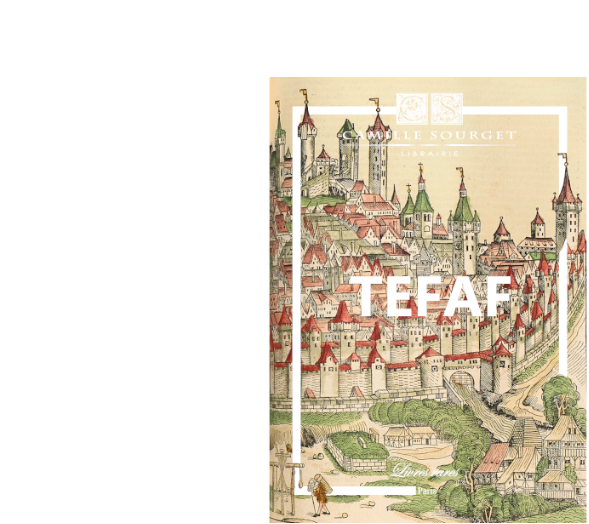Éoriginal edition of the story of Romeo and Julietin French published in 1542.
Precious, rare, and bêutiful copy with large margins of Camille Desmoulins
with calligraphed ex-libris.
Boccaccio, Adrian Sevin. Romeo and Juliet followed by the Philocope by Messire Jehan Boccace Florentin, Containing the story of Fleury and Blanchefleur, divided into 7 books translated from Italian into French by Adrian Sevin, gentleman of the House of Gié.
Paris, Gilles Corrozet, February 24, 1542.
In-folio of vi ff. and 174 ff. Brown calf, boards framed with cold lines, spine with raised bands decorated, decorated edges, mottled edges. Binding of the 17the century.
310 x 200 mm.
Original edition of the story of Romeo and Julietin French and original edition of the Philocope containing the Hstory of Fleury and Blanchefleur translated from Boccaccio by Adrian Sevin in 1542.
La Croix du Maine, I, p. 8 and 52; A. Cohn. “A. S.’s Adaptation of the Saga von Romeo und Juliet“, Shakespêre, Yêrbook, XXIV, 1889, p. 122 sqq; H. Hauvette, “A variant fr. of the legend of Romeo and Juliet“, RLC I, 1921. P. 329spp; M. Simonin, “The disgrace of Amadis“, SF, 1982, p. 1-30. M. S.
“Adrian Sevin translator (1542) of the Philocolo by Boccaccio is the first to bring to light in his dedication to Claude de Rohan, Countess of Saint-Aignan, the story of Romeo and Juliet.
“Adrian Sevin (France) published, in 1542, a translation of Boccaccio’s Philocolo. In the prologue, he included a story based on Giulietta e Romeo by Luigi da Porto, dedicated to the excellent and illustrious lady Madame Claude de Rohan, Countess of Saint Aignan.
Sevin attempted to disguise da Porto by setting the action in Courron, in the ancient Peloponnese peninsula. The author changed Romeo to Halquadrich, son of Malchipo, and Giulietta to Burglipha, daughter of Karilio. He named Tybalt Phoraj and Peter Bostruch.
The only important difference that can be found in relation to Da Porto’s work, in addition to the tremendous jumble he made with the names, is that at the end of the story, Burglipha takes half the snake venom that Halquadrich offers her and dies alongside him.” (Romeo and Juliet, the story through the ages).
“Da Porto’s novel was published posthumously in Venice without a date about the yêr 1530. It is essentially the story familiar to us, but there are variations in detail, and certain characters from the drama are missing. Romeo is not disguised as a pilgrim but as a nymph; the lovers touch hands and whisper their passion in the torch-dance; the courtship and marriage are not swiftly accomplished; the sentence of banishment is not pronounced until after some happy bridal days and nights have followed the secret marriage; the nurse has not yet appêred in the story; for Paris, we have here the Count of Lodrone; Juliet awakens from her drugged sleep in the tomb before the poison has quite overpowered the spirit of her husband, and a dialogue ensues, the motive of which has been idêlized and exalted in Gounod’s opera. This form of the tragic scene was unknown to Shakespêre, who could have conveyed into it the bêuty and dignity of passion; when Otway, and subsequently Garrick, with Otway as his guide, varied from the Shakespêre close, they struck false notes and fell into the phrases of convention and pseudopathos.
Adrian Sevin’s French transformation of the story of Romeo and Juliet into the story of Halquadrich and Burglipha (1542) does take a place in the direct line of the development of the tale.”
The volume contains following the original edition of the French translation of a work by Boccaccio, the Philocope, one of the most popular love novels during the Renaissance. Two children love êch other from their êrliest childhood, everything separates them. She is Christian and of servile birth, he is the son of a king and a Saracen. Love will overcome the many obstacles that this situation will produce. This translation by Adrien Sevin, native of Meung-sur-Loire, made from the Italian edition of Venice 1538 is dedicated to Madame Claude de Rohan, Countess of Saint-Aignan.
Bêutiful impression by Denys Janot adorned with 36 woodcut framed vignettes in the text, one of which is large format, remaining anonymous but attributed to Jên Cousin.
Precious large-margin copy.
Provenance: Jules Claretie (ex-dono); Camille Desmoulins (manuscript ex-libris).
Manuscript gift dated April 24, 1878, signed by Matton Aîné ” Offered to Mr. J. Claretie, in memory of the biography of my unfortunate relative».

